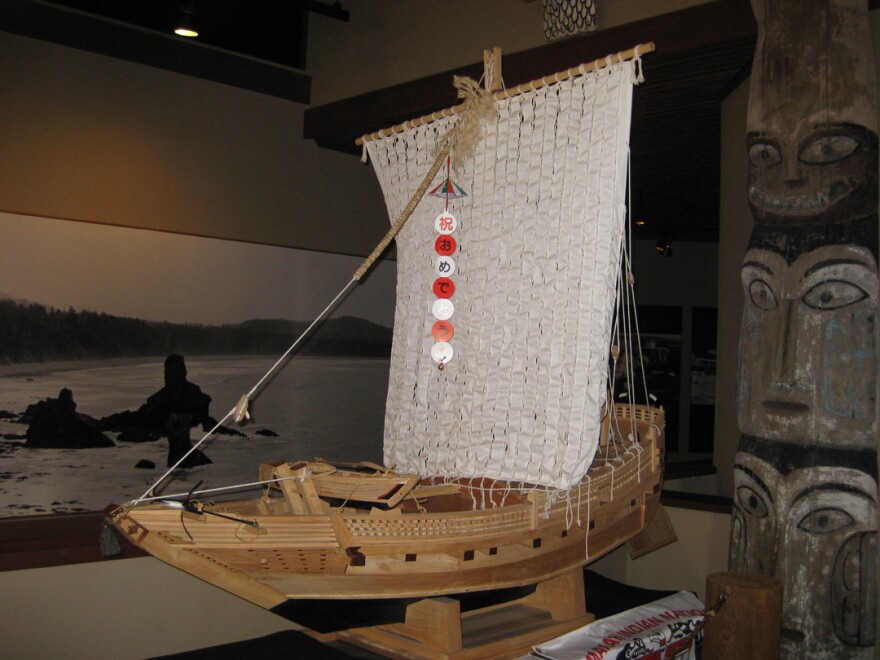It’s not too late to say thank you, even after 180 years. That’s what a Japanese delegation did last week as it retraced the history-making path of three castaways to the Makah Indian Reservation on the Washington coast.
The story starts when a typhoon disabled a coastal trading vessel off central Japan. Three survivors drifted all the way across the Pacific Ocean until their boat wrecked on the Olympic Peninsula coast in early 1834. That made them the first Japanese to set foot in the Pacific Northwest.
The trio was rescued by Makah seal hunters. But the tribe held them captive and ransomed them a few months later to the Hudson's Bay Company.
Now, a delegation from the sailors' hometown met the present-day Makah. Travel agency vice president Masaru Yatabe of Portland was one of their guides.
"The people of Mihama came to express their appreciation," he said. "Because the Makah people saved them, those three (shipwrecked sailors) were able to regain health."
From Neah Bay, the castaway sailors and their 21st century descendants both traveled onward to Fort Vancouver, Washington. While the historic castaways utilized a Hudson's Bay Company trading ship, the modern pilgrims took tour buses.
Actors from the current generation presented the sailors' odyssey in a play called "The Tale of Otokichi," staged at Clark College in Vancouver and at Seattle Center this past week.
"The story is not as well known as the people of Mihama would like," said Yatabe. "They are trying to spread the story."
Yatabe says businessmen and politicians in the delegation hope people-to-people connections can expand into closer economic ties. A foundation already exists. The Chita Peninsula, where the castaways came from, is home to aerospace companies that supply fuselage parts for the Boeing 787 Dreamliner.
This month's cultural exchange was the third time that history buffs from the Mihama area have retraced the steps of the "Three Kichis" — so-called because of the castaways' names: Otokichi, Iwakichi and Kyukichi. Delegations previously visited in 1997 and 2009.
Yatabe says the ill-fated sailors never made it back to their home port despite efforts by the British government to repatriate them. In the early 19th century, Japan's rulers pursued an isolationist policy.
"Even shipwrecked Japanese could not return," said Yatabe. "The Tokyo Shogunate was afraid that they may be influenced by the West or Christianity."
Of the three castaways rescued on the Pacific Northwest coast, the life of Otokichi is the best documented. Fans of Otokichi give him credit for a number of other firsts including his conversion to Christianity while in exile, making him the first Japanese Christian. Otokichi went on to help a missionary in Macao translate the Bible into Japanese.


